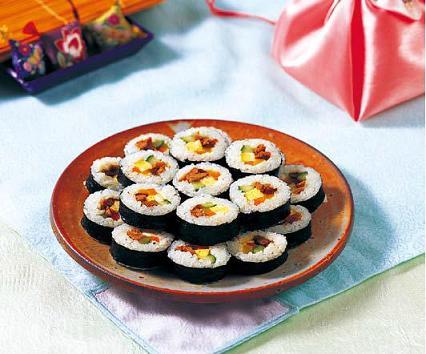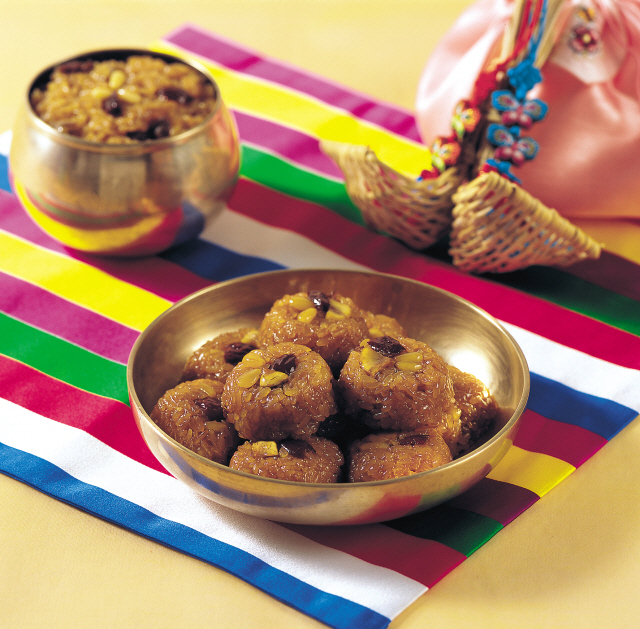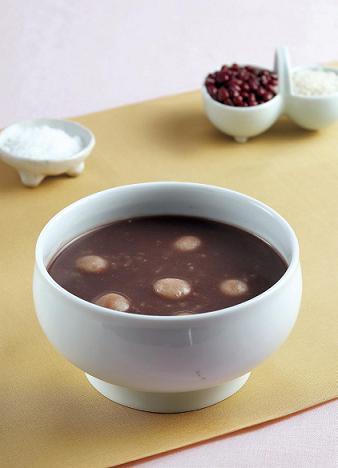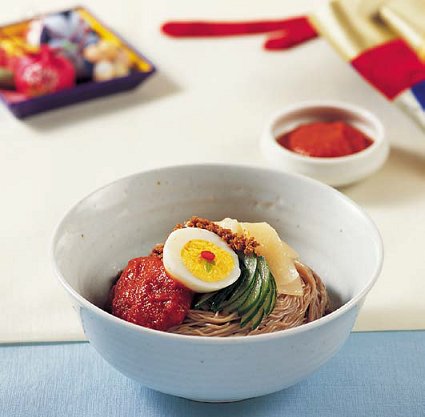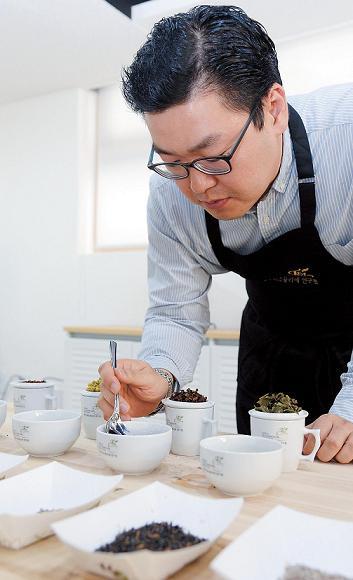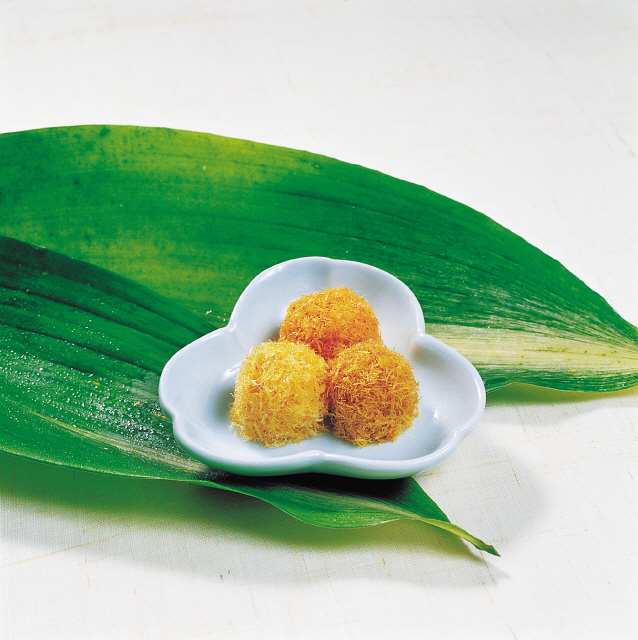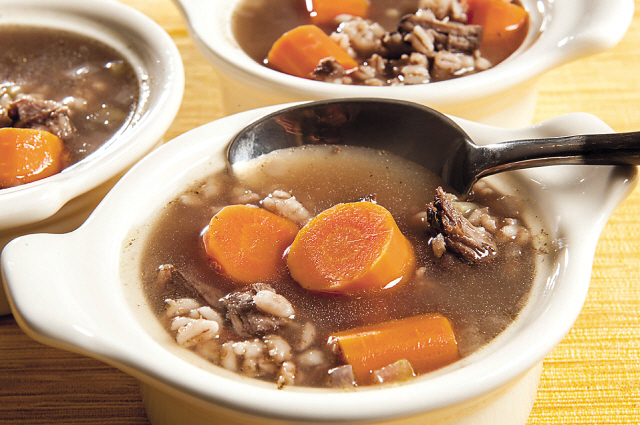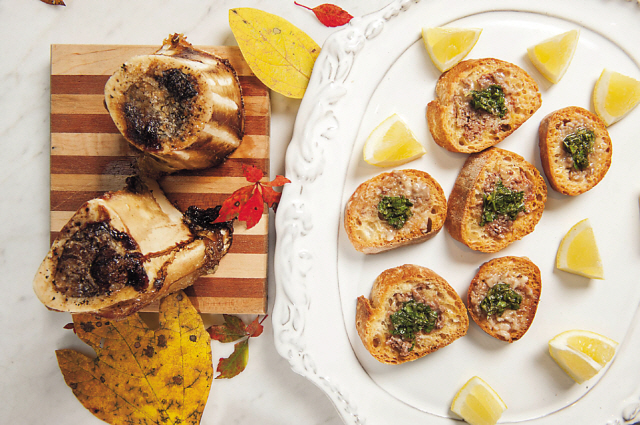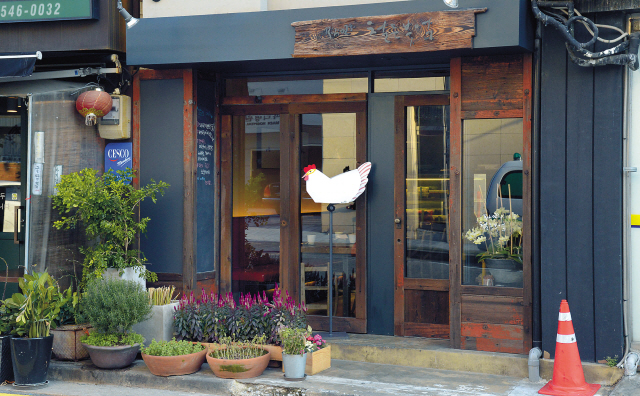 |
| Roh02’s Kitchen is located in Samseong-dong, near Cheongdam Station. (Chung Hee-cho/The Korea Herald) |
Food stylist and researcher Roh Young-hee pulls off her trademark combination of good Korean cuisine and artistic plating yet again at her newest restaurant, Roh02’s Kitchen.
Roh first earned her cred as a restaurateur with the modern Korean establishment Poom Seoul several years ago.
When Poom opened in 2008, it created a stir among food critics and chefs with its then-novel interpretation of Korean cuisine as a multi-course affair.
Now, nearly four years later, Roh revisits themes initially showcased at her previous restaurant, but with a more casual slant.
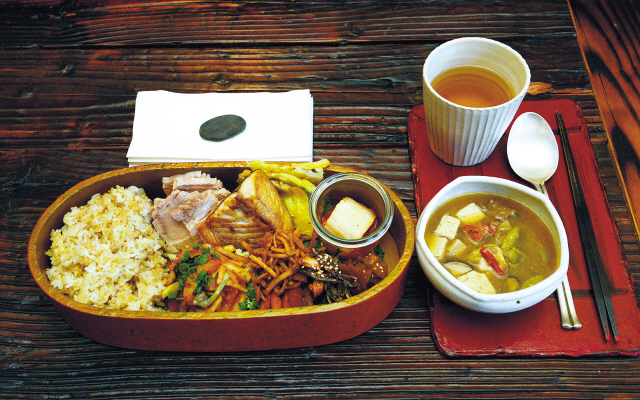 |
| Tuesday’s menu features sticky brown rice, salt-cured mackerel, bossam (boiled pork belly), oyster-and-daikon radish relish, deodeok root, cabbage pancakes, piquant squid, pickles, kimchi and soup. (Chung Hee-cho/The Korea Herald) |
At Poom, Roh focused on upscale cuisine traditionally served to the Korean nobility and gave it a modern spin, transforming it into a high-end parade ideal for formal dining.
At Roh02’s Kitchen, Roh tackles good, old-fashioned food from the hearth, i.e. time-tested grub from the average Korean home, and instead of presenting it on plates, she puts it all in a dosirak (lunch box).
“If Poom is appropriate for suit-and-tie dining, then this is a laid-back spot where customers can enjoy home-style fare,” Roh02’s Kitchen manager Kim Dae-hyun said, summing up the primary differences between the two restaurants.
Roh02’s Kitchen opened in Samseong-dong this September, a good distance away from Poom on Namsan.
According to Kim, Roh chose the small street near Cheongdam Station because she also plans to move her atelier, Studio Foodie, there.
“She wants to turn this lane into ‘Roh’s Avenue,’” Kim joked.
Food gurus will also notice that Roh02’s Kitchen is located in a space that once housed the French bistro L’Espoir. When L’Espoir moved to a new spot, Roh took over and made a few minor adjustments.
Modeled after an old-school banchan (side dish) shop, the floor-length windowed storefront opens to a wooden counter with a glass showcase displaying a smattering of take-away goodies.
A long, hallway-shaped space with butter yellow walls sports a total of 16 seats, including a red booth to the left and a row of two person tables to the right.
The solitary, one option only for both lunch and dinner, prix fixe menu changes daily, with only 40 handmade dosirak sold per day.
Prices range from 20,900 won to 29,700 won, which means that though the inspiration comes from banchan, this is not the standard under-10,000 won baekban (rice-side dish-soup meal).
The pricing might come as a surprise to people expecting a quick lunchtime bite, and, indeed, on a weekday afternoon, a group of visitors decide to go elsewhere after learning how much it costs to eat at Roh02’s Kitchen.
“We don’t use artificial seasonings,” Kim said in justifying the prices. “We only season our food with basic condiments, so we end up using more main ingredients, produce and meat, naturally upping our expenses. Furthermore, we try to use mostly domestically produced ingredients and everything is made by hand, without shortcuts.”
When the Tuesday menu ― the lowest priced of the five ― arrives with lots of delicacies neatly and strategically tucked into a minimal, oblong dosirak container and a bowl of soup, any disgruntled reservations about having to shell out 20,900 won for a boxed meal vanish.
The sticky brown rice, glossy and chewy, is cooked to perfection, as is the bossam (boiled pork belly). A spicy daikon radish relish studded with small, plump, fresh oysters begs to be paired with those juicy, rich slices of pork, and it would be a sin not to.
The hunk of salt-cured mackerel is soft and flaky and the thin strips of piquant squid, pickles and cabbage pancakes are all equally toothsome.
This is Korean home cuisine done right: Thoughtful, painstakingly made fare that includes the necessary grains, meats and vegetables for a well-rounded meal.
Roh02’s Kitchen● Address:
65 Samseong-dong, Gangnam-gu, Seoul/ (02) 543-5177
● Hours:
Open noon to 2 p.m., 6 p.m. to 10 p.m., Mondays through Saturdays, closed Sundays. Reservations recommended for groups of three or more.
By Jean Oh (
oh_jean@heraldcorp.com)


